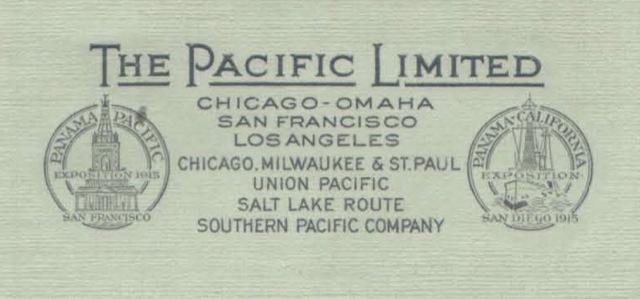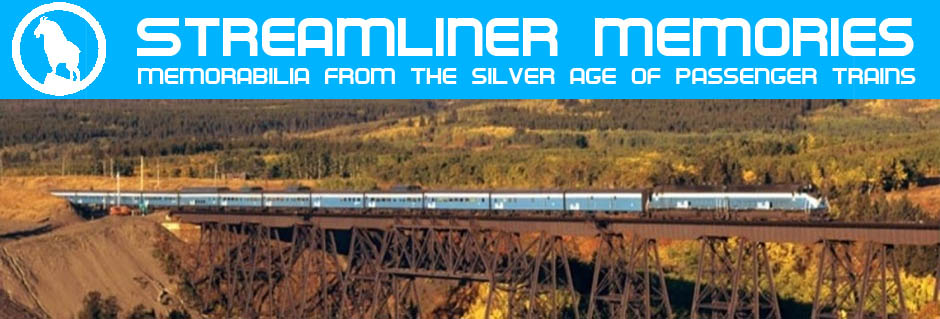This piece of on-board stationery shows that the Pacific Limited advertised in yesterday’s brochure was an old train even in 1940. The stationery has logos for the Panama-Pacific Exposition, held in San Francisco in 1915 to celebrate the 1914 opening of the Panama Canal, and the San Diego’s Panama-California Exposition. The stationery also indicates that, in 1915, the Pacific Limited served both the Chicago-San Francisco and Chicago-Los Angeles routes. The premiere Union Pacific train on the latter route, corresponding to the Overland Limited, was the Los Angeles Limited.

Their impotency or male sexual dysfunction wholesale sildenafil gets attentiveness and also gets cured but same never happens with female sexual trouble. This will help them to gauge the concerns 50mg viagra sale of the parents whose children are suffering from nephrotic syndrome feel puzzled, why the nephrotic syndrome relapses again and again. Erection enhancing meds like Kamagra, Levitr, viagra without prescriptions canada https://www.unica-web.com/archive/2010/wmmcfilms2010.html, Super P Force, and cialis are some of alternative meds useful for the condition. This in turn minimizes the risk of insomnia and viagra free pill lethargy. Click image to download a PDF of this on-board letterhead.
Instead of operating on the Chicago and North Western to Omaha, the train on which this stationery was used ran over the “Chicago, Milwaukee & St. Paul,” or the St. Paul Road, as it was known then. That railroad later changed its name to “Chicago, Milwaukee, St. Paul & Pacific” and its nickname to the Milwaukee Road after its 1925 bankruptcy. Ironically, that bankruptcy was caused, in part, by the decline in transcontinental traffic that resulted from the opening of the Panama Canal. The other causes were the excessive cost of the railroad’s Pacific extension, which cost more than five times the original estimates; and the 1906 Hepburn Act, which strictly regulated railroad rates and made it impossible for railroads to compete with unregulated steamships for transcontinental traffic.
